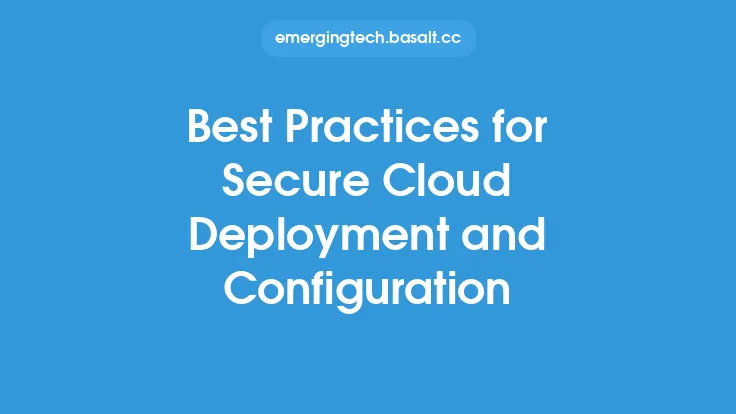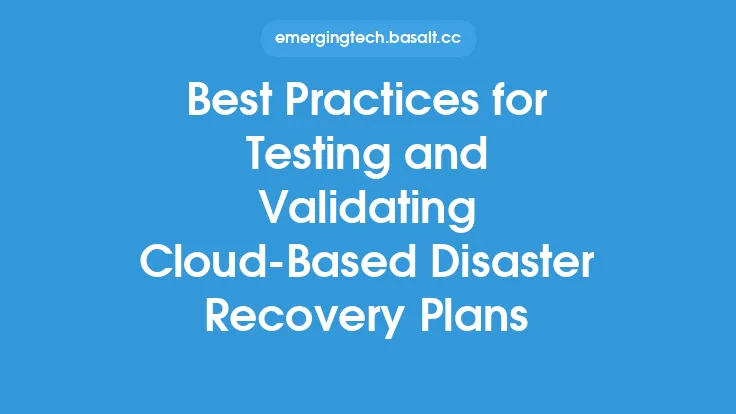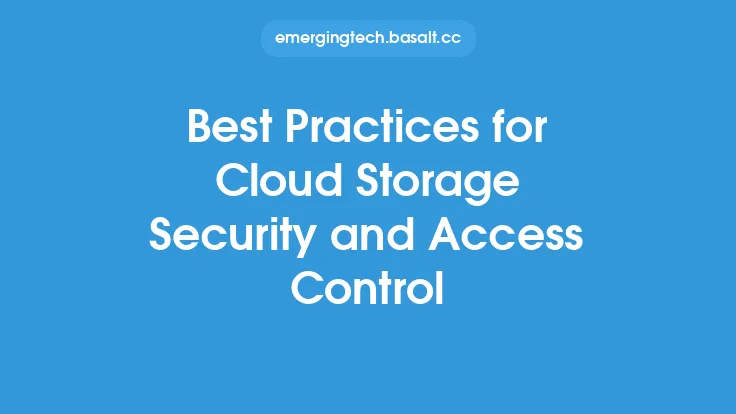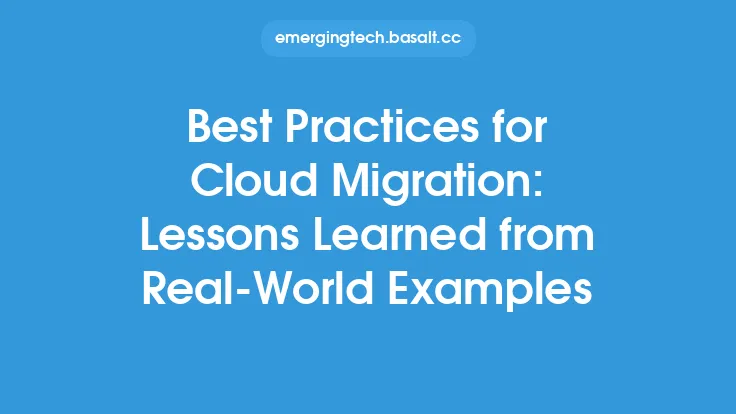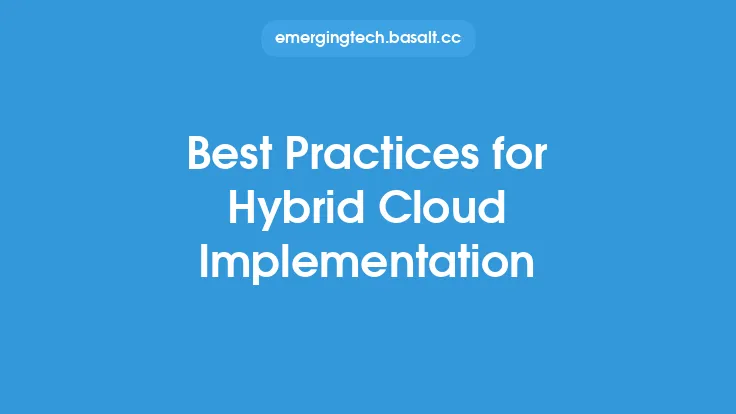Deploying and managing cloud infrastructure is a complex task that requires careful planning, execution, and maintenance. As more organizations move their operations to the cloud, it's essential to follow best practices to ensure a smooth transition, optimal performance, and cost-effectiveness. In this article, we'll explore the best practices for deploying and managing cloud infrastructure, providing you with a comprehensive guide to help you navigate the process.
Introduction to Cloud Infrastructure Deployment
Deploying cloud infrastructure involves setting up and configuring the necessary resources, such as virtual machines, storage, and networking components. This process can be done manually or automated using various tools and scripts. To ensure a successful deployment, it's crucial to follow a structured approach, starting with assessing your organization's requirements, choosing the right cloud provider, and selecting the appropriate deployment model. A well-planned deployment strategy will help you avoid common pitfalls, such as overprovisioning or underprovisioning resources, and ensure a seamless integration with your existing infrastructure.
Security and Compliance Considerations
Security and compliance are critical aspects of cloud infrastructure deployment and management. As you move your data and applications to the cloud, you must ensure that they are protected from unauthorized access, data breaches, and other security threats. This can be achieved by implementing robust security measures, such as encryption, firewalls, and access controls. Additionally, you must comply with relevant regulations and standards, such as GDPR, HIPAA, and PCI-DSS, which govern data privacy and security. Regular security audits and risk assessments will help you identify vulnerabilities and address them before they become major issues.
Monitoring and Logging
Monitoring and logging are essential for ensuring the performance, availability, and security of your cloud infrastructure. By monitoring your resources and applications in real-time, you can quickly identify issues, detect anomalies, and take corrective actions. Logging provides valuable insights into system events, errors, and security incidents, allowing you to troubleshoot problems and improve your infrastructure's overall health. Choose a monitoring and logging tool that integrates with your cloud provider and provides customizable dashboards, alerts, and notifications to help you stay on top of your infrastructure's performance.
Cost Optimization and Management
Cloud infrastructure costs can quickly add up if not managed properly. To optimize your costs, it's essential to right-size your resources, eliminate unused or underutilized resources, and take advantage of cost-saving features, such as reserved instances, spot instances, and autoscaling. Regularly review your usage patterns, and adjust your resource allocation accordingly. Additionally, consider using cost management tools that provide detailed usage reports, cost forecasts, and recommendations for optimization. By implementing cost-effective strategies, you can reduce your cloud expenses and allocate resources more efficiently.
Scalability and Performance
Scalability and performance are critical aspects of cloud infrastructure management. As your organization grows, your infrastructure must be able to scale to meet increasing demands. This can be achieved by using autoscaling, load balancing, and content delivery networks (CDNs). Regularly monitor your infrastructure's performance, and adjust your resource allocation to ensure optimal performance. Consider using performance optimization tools that provide insights into system bottlenecks, latency, and throughput. By ensuring scalability and performance, you can deliver high-quality services to your users and maintain a competitive edge.
Backup and Disaster Recovery
Backup and disaster recovery are essential for ensuring business continuity in the event of an outage, data loss, or disaster. Develop a comprehensive backup strategy that includes regular backups, snapshots, and archives. Choose a backup solution that integrates with your cloud provider and provides automated backup and restore capabilities. Additionally, create a disaster recovery plan that outlines procedures for restoring your infrastructure and applications in the event of a disaster. Regularly test your backup and disaster recovery processes to ensure their effectiveness and make adjustments as needed.
Automation and Orchestration
Automation and orchestration are critical for streamlining cloud infrastructure management tasks, reducing manual errors, and improving efficiency. Use automation tools, such as Ansible, Terraform, or CloudFormation, to provision, configure, and manage your resources. Orchestration tools, such as Kubernetes or Docker Swarm, can help you manage containerized applications and services. By automating repetitive tasks, you can free up resources, reduce costs, and focus on strategic initiatives.
Governance and Compliance
Governance and compliance are essential for ensuring that your cloud infrastructure meets organizational policies, regulatory requirements, and industry standards. Establish a governance framework that outlines roles, responsibilities, and policies for cloud infrastructure management. Regularly review and update your governance framework to ensure it remains relevant and effective. Consider using compliance tools that provide real-time monitoring, reporting, and remediation capabilities to help you stay compliant with relevant regulations and standards.
Conclusion
Deploying and managing cloud infrastructure requires careful planning, execution, and maintenance. By following best practices, such as security and compliance considerations, monitoring and logging, cost optimization and management, scalability and performance, backup and disaster recovery, automation and orchestration, and governance and compliance, you can ensure a successful transition to the cloud. Remember to stay up-to-date with the latest cloud technologies, trends, and best practices to continuously improve your cloud infrastructure management capabilities. With the right approach, you can unlock the full potential of the cloud and drive business success.
